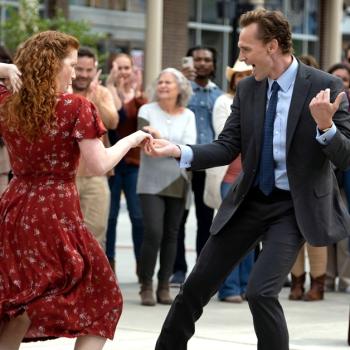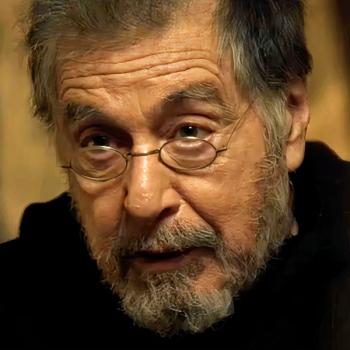As the old saying goes, history is written by the victors, and in the case of Mary Tudor, England’s first ruling queen, the Anglican victors in the country’s religious struggle have done their worst to her.
But, clear-eyed and fair as always, British historian Lucy Worsley is here to set the record straight.
‘Lucy Worsley Investigates’ Probes the Real Life of Mary Tudor
On Sunday, March 23, on PBS (and on PBS.org, for Passport members) the latest episode of Lucy Worsley Investigates looks at the life of Henry VIII’s first daughter, Mary Tudor, Catholic daughter of Spanish-born Catherine of Aragon.
Was Mary Tudor Really a Bloody Tyrant?
History has labeled Mary Tudor as “Bloody Mary,” for her persecution of non-Catholic Christians during her reign.
Yes, that happened, but it didn’t happen in a vacuum.
What history often fails to include was the much greater persecution of Catholics that happened under Henry VIII, and under his immediate successor, Edward VI, and Mary’s successor, Elizabeth I.
Also, it often overlooks the brutal treatment of Spanish Catholic Catherine of Aragon, whom Henry tossed aside when she couldn’t produce a living male heir. That was followed by the teenage Mary being declared illegitimate, stripped of her title and rank, and essentially exiled from court.
Worsley does an admirable job of sifting through the evidence to find the real woman underneath the layers of propaganda.
Henry VIII Had Six Wives, But the Attention Isn’t Spread Evenly Among Them
The six wives of Henry VIII is a popular topic for films and TV, but the wife who often gets the shortest shrift is the first, Catherine. And of Henry’s three children, Elizabeth has passed into legend, while Mary has passed into infamy, and Edward, into obscurity.
But, there have been some other shows which, thankfully, have decided to show Catherine and Mary as human beings, and tell their stories.
The Tudors
One was Showtime’s 2007-’10 bawdy The Tudors, available to stream from many places, including Prime Video.
As I wrote at the end of Season 1:
The first 10 hours have chronicled only the dissolution of Henry’s first (and longest) marriage, a political union with Catherine of Aragon (Maria Doyle Kennedy), the virtuous and strong-willed daughter of Spanish monarchs Ferdinand and Isabella (best known for bankrolling Christopher Columbus).
After failing to produce a male heir, Catherine was urged in the strongest possible terms to step aside, in particular to make room for the seductive and ambitious Lady Anne Boleyn (Natalie Dormer). She refused to go quietly, and the resulting political and religious turmoil – combined with Henry’s desperate desire to father a legitimate son – resulted in Henry breaking with the Roman Catholic Church and establishing himself as head of the church in his own land.
“The Tudors” perhaps represents the first time that Catherine has been given her due.
“We felt her story needed to be told,” says executive producer Ben Silverman (who has just taken over as NBC’s new entertainment co-chair). “It was so informative of Henry’s genesis, where he came from and the relationship that begat all this. It makes more sense if you really delve into it.”
“She’s usually pretty quickly dispensed with,” says Showtime entertainment chief Robert Greenblatt, speaking of Catherine, “and Anne Boleyn gets most of the attention. (Writer/creator) Michael Hirst, in doing his research and getting into the story, could create characters. That’s one of the virtues of playing it out, and not having to do it in one quick miniseries.
“We could really see Henry and Catherine. He didn’t hate her. In fact, in the beginning, he cared a lot for her. It was just a weird situation, because he was forced to marry her. Then he falls in love with somebody that he really gets attracted to, and the rest is history, as they say.”
Becoming Elizabeth
Another was Starz’ short-lived (almost as bawdy but not quite) Becoming Elizabeth in 2022, which also delved into Edward. As I wrote at the time:
As bookends, you have the newly crowned boy-King Edward VI (Oliver Zetterström), who’s way more of a zealous Protestant than his father (who basically ripped England from Rome just so he could father a son), and Catholic Princess Mary (Romola Garai), who spent her youth watching her mother abandoned and accused.
Then, presented as being in the middle is Elizabeth (Alicia von Rittberg). And, truth be told, while Catholics had a miserable time under her reign, they had a vastly more miserable time under Edward’s (and his Archbishop of Canterbury, Thomas Cramner).
Acting on his own principles, Edward VI led the comprehensive dismantling — and desecration — of Catholic England.
But, the series has sympathy for all three half-siblings, who find themselves in precarious and perilous circumstances. In particular, Mary is shown as an older voice of wisdom and temperance, not as the usual half-bonkers harridan.
And …
Mary is seen being horrified and humiliated at a viciously anti-Catholic play at court, but it’s only the beginning of the indignities she’s made to suffer.
Too often, Mary’s religious zealotry when she becomes queen is seen as madness or wanton cruelty, rather than the reaction of a woman who’s seen everyone and everything she treasures ripped away and destroyed.
And, in the end, she did no worse than her brother or sister (that’s not a justification of any of them, just an observation).
On the other hand, there’s The Spanish Princess
By contrast, Starz’ 2019 The Spanish Princess, based on Philippa Gregory novels, seeks to profile Catherine but winds up doing her dirty.
Catherine claimed, to the end of her days, and in court under oath, that while she was indeed first married to Henry’s sickly older brother, Arthur, that the marriage was never consummated. Because of that, Henry got a dispensation from the pope to marry Catherine.
But, he tried to get that overturned when he wanted to ditch Catherine for the ambitious Protestant Anne Boleyn. When the pope said no, Henry ripped the fabric of his nation apart.
I watched enough of the eight episodes to confirm that the miniseries does indeed show Catherine (Charlotte Hope) and Arthur (Angus Imrie) consummating their marriage.
That means — in the view of Gregory and the producers — Henry was right in claiming that Catherine, a devout Catholic, undertook her solemn marriage vows to him under a cloud of deceit.
Watching Lucy Worsley
Lucy Worsley Investigates is also available on Prime Video, IF you have a BBC Select subscription. But, there is also a lot of Worsley’s delightful content on YouTube, so check her out.
For example, this full episode about the War of the Roses, a tale of Catholic England:
And another, about the so-called Glorious Revolution, when Catholicism threatened to return to England:
Image: Lucy Worsley holds a rare miniature portrait of the young Mary Tudor/PBS
Don’t miss a thing: Subscribe to all that I write at Authory.com/KateOHare














